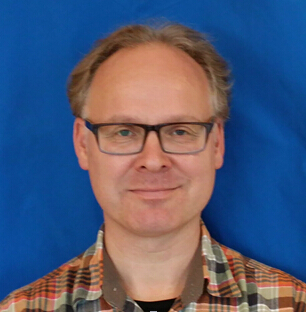主讲人:Klas Hjort 瑞迪乌普萨拉大学微系统学科首席教授
时 间:2015年9月15日9:30
地 点:先进制造大楼B702
主持人:吴志刚 教授
邀请单位:华中科技大学柔性电子研究中心
beat365手机版官方网站
数字制造装备与技术国家重点实验室
Microfluidic Stretchable Electronics
In contrast to the traditional rigid and brittle silicon-based electronics, stretchable electronics has brought interest due to its high mechanical compliance when it is attached to complex and soft surfaces such as our skin, eyes or inner organs. This is of particular interest for many devices which require ergonomic interfaces to enhance our user experience, e.g. intelligent contact lenses which intimately interact with the eye. By employing a soft format, stretchable electronics not only relies on a static deformable format but may also be employed in dynamical systems.
Elastic electronics has significantly advanced in the past decade by micro/nano fabrication of thin films of traditional stiff and hard materials such as silicon, metals and ceramics, with subsequent transfer printing to an elastic substrate. However, such thin film structures suffer from high square resistance that leads to low performance when long structures are required. This is in particular true for antennas in radio frequency (RF) electronics. By introducing microfluidics into RF electronics, we found out that it was an excellent way to make high performance stretchable RF electronics. Apart from antennas, the microfluidic approach was also adopted and further developed to various devices for wireless sensors. This fusion of microfluidics with RF electronics brings not only several opportunities for researchers as a new research field but also potentially commercial benefits for industry. However, being a new emerging field, a huge effort, ranging from fundamental science to technology development, is required to realize societal impact.
Klas Hjort教授简介:

Hjort has more than 25 years of experienced in advanced microengineering. Previously, his focus was telecom applications, studying optical and RF MEMS in III-V materials. Last decade, he has focused on heterogeneous microsystems on stainless steel, flexible foils and elastomers; for life science and wireless sensor node applications. With novel process technologies, he has demonstrated ion-track lithography on flexible printed circuit board for, e.g., integrated microwave and sensor components, +100 bar micromechanical pumps and valves in stainless steel laminates, microfluidic stretchable intelligence with liquid alloy conductors, microdialysis for protein analysis, and soft inertial fractionation devices.